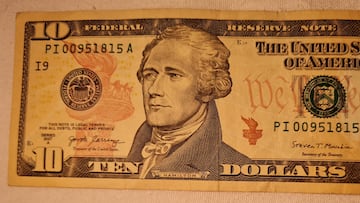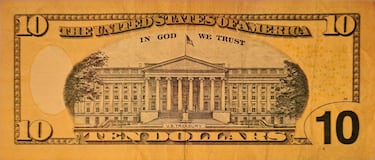What building is on the back of the 10 dollar bill?
While everyone in the country needs to use dollar bills of various denominations, the design of the money that makes our world go round is less known.


The United States ten-dollar bill, a staple of American currency, has long featured the likeness of Founding Father Alexander Hamilton on its front. However, it’s the reverse side of the note that often sparks curiosity and prompts questions, most specifically about the building that is depicted there.
Ever wondered why Alexander Hamilton is on the $10 bill? "Hamilton's America" premieres Friday at 9|8c on PBS. #HamildocPBS pic.twitter.com/xCZo2IkapB
— Great Performances (@GPerfPBS) October 18, 2016
What is the $10 building?
A closer examination reveals that the notable architectural landmark is, of course, the U.S. Treasury Building. Situated in Washington, D.C., this historic structure has played a pivotal role in the nation’s financial system since its construction commenced way back in 1836. It served as the headquarters of the United States Department of the Treasury, and stands as a symbol of fiscal policy, monetary regulation, and economic stewardship.

Designed by architect Robert Mills, the U.S. Treasury Building embodies the neoclassical architectural style, characterised by its grand facades, imposing columns, and intricate detailing. Its construction spanned several decades, with the North and South wings completed in 1860 and the centre section finished in 1862, amidst the backdrop of the American Civil War.
Beyond its architectural grandeur, it holds practical importance as the nerve centre of the nation’s financial operations. It houses key offices responsible for managing the country’s revenue, formulating economic policies, and overseeing the production and circulation of currency – including the very $10 bills on which its image is immortalised.
What other features does the U.S. $10 bill have?
While the portrait of Alexander Hamilton on the front of the $10 bill rightfully garners attention, and it’s the depiction of the U.S. Treasury Building on the reverse has some weight, there is so much more to the currency.
Harriet Tubman to appear on $20 bill, Hamilton stays on $10: https://t.co/mSUK99dHSE pic.twitter.com/LIrTuhZUlc
— The Seattle Times (@seattletimes) April 20, 2016
Related stories
Over the years, the bill has undergone several redesigns to incorporate various security features and updated aesthetics. These redesigns aimed to stay ahead of counterfeiting while also reflecting changes in American culture and history. There was significant public discourse around the decision to potentially replace Hamilton on the bill with Harriet Tubman, an African American abolitionist and political activist. Tubman’s role in the Underground Railroad and her advocacy for women’s suffrage made her a compelling candidate for the new $10 bill design. In the end, she was put on the $20.
Like other U.S. currency denominations, the $10 bill incorporates numerous security features including color-shifting ink, watermarks, security threads, and microprinting, among others.
Complete your personal details to comment